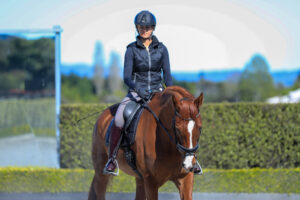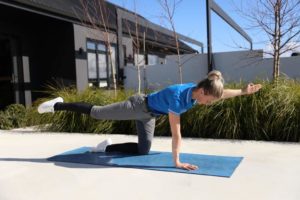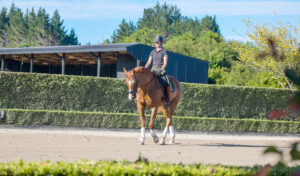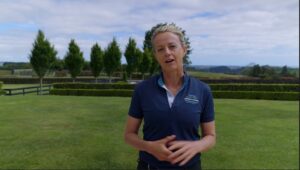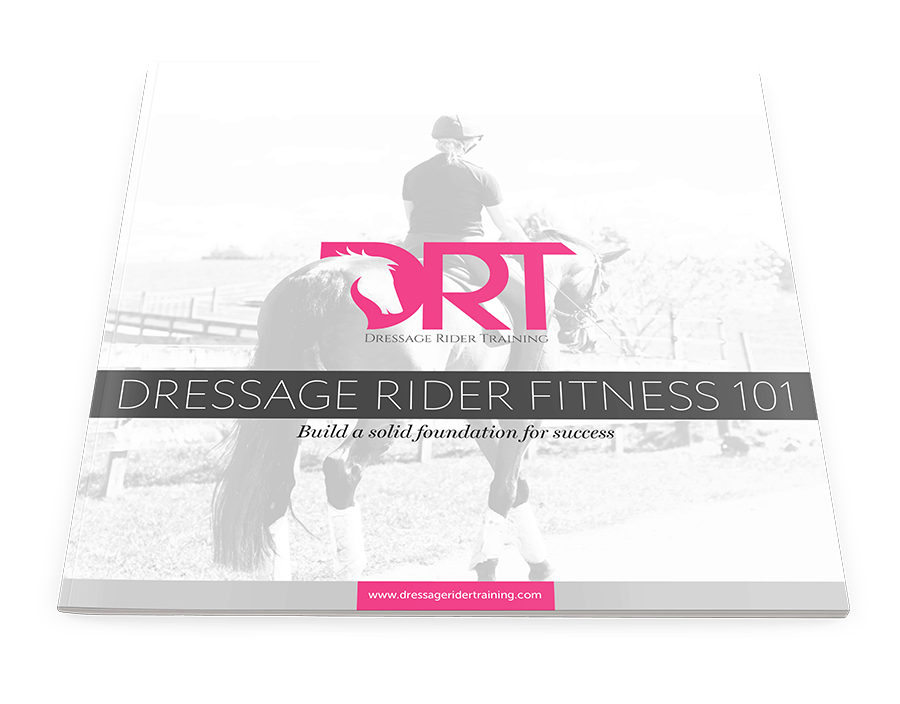Ultimate Guide To Being A Writer For Dressage
In this article, I will guide you through how you can begin being a writer for dressage and share my tips to make your first time a breeze.
I have always tried to volunteer as a writer for dressage locally. It’s a great way to meet people, and you also learn a lot! Plus, shows can’t run without volunteers and I know just how much writers are appreciated in the organisation of dressage competitions.
Wherever you see a judge at a show, you will see a writer (also referred to as a dressage scribe) sitting right beside them. A writer’s purpose is to write down the dressage judge’s comments on the test they are watching.
Every single judge requires a writer. Sometimes the judge may have the same writer for the entire day of dressage tests, other times people are volunteering to write for a few hours when they can. The longer you can volunteer to write, the easier it is for the organizing committee.
One of the best ways to begin writing or scribing for a judge is to volunteer for a local show or practice day at the lower levels. This gives you a chance to get a feel for what is involved and how it all works. In the lower levels, there is more time between movements and you get a feel for the type of comments that judges say and how a test flows. As the tests get harder and the movements become quicker, it does require more skill.
Learning to stay focused throughout the entire test and record down which movement the judge is talking about and where the marks correlate. So it’s important to not get distracted to peer over and watch your friend ride their test and lose track of where you are.
Preparation
Dressage competitions are planned to the minute. So if you are volunteering to be a writer, try to arrive a good 30 minutes early so that you can introduce yourself the judge, collect any clipboards or sheets from the office and find out what arena you are heading towards. At this time, it’s a good idea to take a bathroom break as you can’t leave the arena again until the next scheduled break.
Judges will either be in a car or a judge’s box. Take everything you need with you; a few pens, including a red one for errors. Be sure to check with the office for any updated day sheets, these could include scratches or changes to the schedule; the correct test sheets in front of you and a watch set to the official start time.
You want to dress tidy and be in comfortable clothes. You will be spending much of the day sitting and sometimes this will be in the comfort of a car, but do bring some clothing options in case it is cold and you are exposed to the elements for some reason.
If it’s wet and raining, bring a waterproof jacket as umbrellas tend to not go down too well at Dressage competitions. Also when opening and closing doors also are aware of where horses are and try not to slam doors causing horses to spook right in the middle of a test.
Bring a drink bottle and few snacks to keep you going so you don’t get hungry and lose focus. In most cases lunch is provided for volunteers at competitions, but do check beforehand if this isn’t the case.
As a writer for dressage, your goal is to be seen and not heard as you don’t want to distract the judge. You are turning your ears on for listening carefully and try save any casual conversation for when there are no horses in the arena in front of you or during your breaks.
The Goal of Writing
One of your main goals as a writer is to write down clearly what the judges’ comments are for each movement.
Judges are skilled at knowing the best words to use to communicate, so listen to the judge and write down clearly what the judge is saying. The competitor will appreciate clear handwriting, so try and write as well as you can.
There is no official dressage writing shorthand, however, there are some common abbreviations that you can use. So get creative if you need and use shorthand where you can.
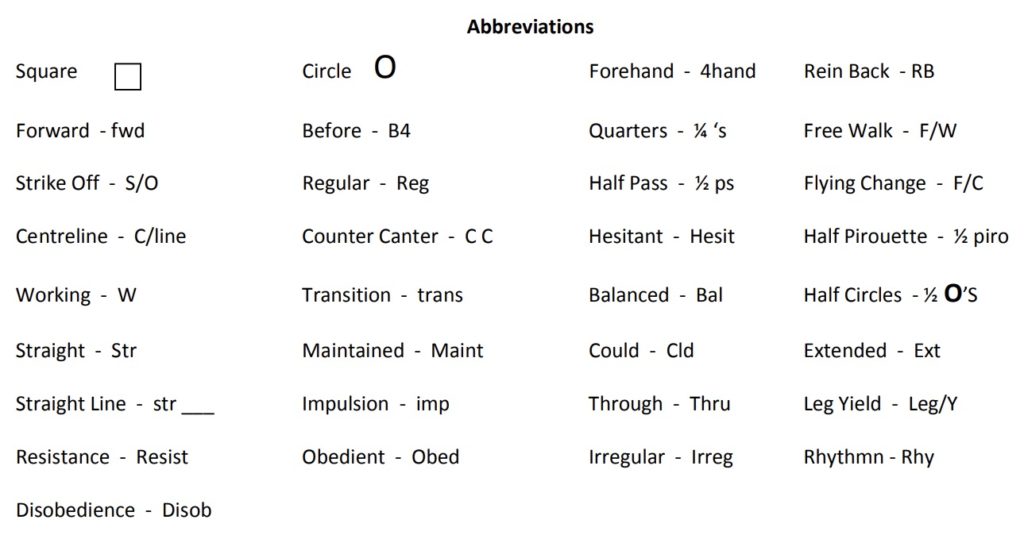
Accuracy Is Everything
In all tests, be sure to write down the decimal point, especially when it is just a single number like “7,” write “7.0”. If you miss what the judge said ask right away. You do not need to write down coefficients, just the score the judges give you and the rest will be taken care of by the office when they calculate the final scores.
Sometimes riders make mistakes and do the wrong movement or forget where they are going. You will need to record a course error this is at the base of the test sheet in most cases and you will need to tick the box marking the error. If in doubt, you can ask the judge when the rider finishes their test.
You can learn so much from writing and understand more about what the judges are looking for at each level. It helps you develop an eye for correct training and seeing how a horse is moving through a test. Anyone can do it and you don’t need a qualification or certificate to get started, the key is to just volunteer locally at the smaller shows at the lower levels and get a real feel for what is involved and how it all works. Judges are always happy to answer any questions too.
Here is an example of what you are writing and where. Sometimes there will be comments for every movement, sometimes there will be just a score. All depends on the judge. As you can see tidy clear handwriting is always appreciated.
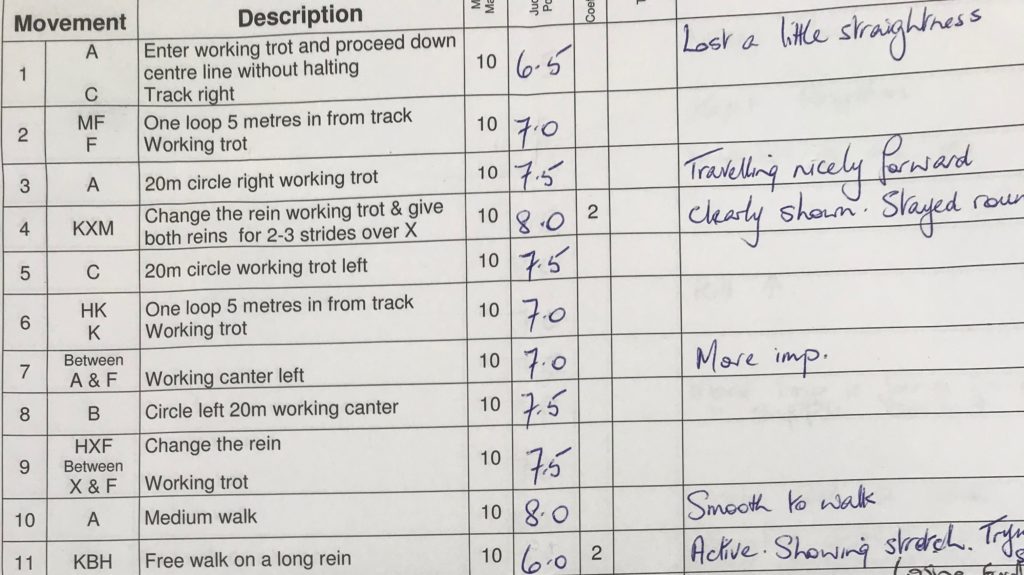
It’s not rocket science being a writer for dressage, but it does require a few key components to understand and a willingness to learn. I always enjoy times when I do write as it really does help me develop a better eye for what I am trying to achieve with my own riding and understanding of what the judge is looking for.
To summarize here are my key takeaways to help you get started with writing for dressage
1. Start with a local show/practice day
Just like riding and competition consider a low-key local show or practice day as a way to start and get a feel for what is involved. You could also ask to sit in the back and watch a few tests be done if you would like to see them before doing it yourself.
2. Writing for a full day
Ideally, if you can volunteer to write for a full day as you will make life so much easier for the volunteers organizing the show, but even a few hours or 1/2 a day will be appreciated.
3. Dress appropriately
The weather can change over the period of a day no matter where you are based always be prepared for the unexpected as you don’t want to end of shivering and frozen cold. At the same time, always come prepared with protective clothing against the sun. As sometimes it can beat down into the side of a car and you can end up with one 1/2 of your body sunburnt if you aren’t careful.
4. Arrive 30 minutes before
You want to be early so that you can meet the judge, find out any new information from the office and then make your way over to the judges car/box with plenty of time to spare before the first horse comes around the arena.
5. Check in
When you arrive, check-in with the office so that you can be checked off and they can introduce you to your judge and where you will be writing. At this time you will pick up any supplies if the judge doesn’t have them already.
6. Set yourself up
Once you sit down organize yourself and check the riders list, check you have the right tests in front of you and most importantly that your pen is working and that you have a spare just in case.
7. Judges’ unique way
Before the first test, just determine what way your judge scores. Some judges will identify the movement number and then assign their score and comments in that order; others will say only the score with comments after or vice versa. Knowing this ahead of time can really help.
For example
“Movement one. Lost a little straightness. 6.5.”
Or
“Lost a little straightness. 6.5.”
Or
“6.5. Lost a little straightness.”
Some judges will ask you to write the scores and comments for the marks at the bottom of each test sheet, under the movements. Others prefer to do some or all of it themselves. You will soon find out what your judge prefers and when they want you to pass them the test after you write the last movement’s score and comments. Judges will then sign the bottom of the test once it is completed.
8. Identifying the rider
Your job is to identifying the competitor’s number against the class schedule before the judge rings the bell for them to begin their test. Make sure it matches and place it on the test sheet along with the class number, rider name and horse name.
9. A Enter
Only write down what they tell you to write and if in doubt just ask them. If you think they have forgotten something in scoring an error, check with the judge before writing anything down.
Once the rider has completed the test, pass the test sheet to the judge, make sure they sign it and put it into the completed pile (out of the wind).
Pick up the next competitor’s test, check the bridle number, write the scores and comments, pass the test to the judge and then add it to the pile.
Repeat until your next break.
So next time you see a local practice day or show be sure to volunteer as a writer. It’s a really valuable way to help you improve your riding, meet new people and give back by helping out locally with your chosen sport.
More articles
Dressage Rider Training Program
Join other participants on our 12-week 'step-by-step' online rider
training program. Improve the 5 components of your riding.
Only available 3x per year.
see full details & register your interest
